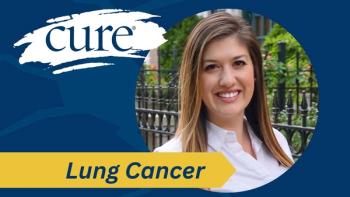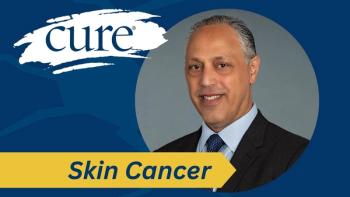
- Heal® Summer 2022
- Volume 10
- Issue 2
I'm a Cancer Survivor... What Now?

Although much has changed in the past two decades, more needs to be done to prepare cancer survivors for what happens after their treatments end.
Gwen Goodman is a survivor of stage 4 Hodgkin lymphoma. She was shocked when, years after her treatment, she wasn’t taken seriously at the doctors when complaining about symptoms she was experiencing. She had never been told she might have long-term side effects after her treatment was finished.
“All of a sudden when you’re cured it’s like, ‘OK, you’re good.’ ... I felt like nobody was listening to me anymore,” she said in an interview with Heal®.
No One's Talking or Listening
Goodman, was 22 when she received her Hodgkin lymphoma diagnosis. Then 13 years after she had finished her cancer treatment at the age of 35 she started noticing side effects. She began to experience
It once became so painful she went to the emergency department where a doctor told her: “You don’t have neuropathy; you don’t have diabetes.”
She left crying.
“It’s frustrating because you are looked at as a pill seeker or a hypochondriac. But being in that situation at such a very young age, every little bump, every little everything is scary, and you have to find a doctor who really listens to you,” she said.
Today, more research is available and physicians are more knowledgeable about what happens after someone has survived cancer.
“I think what we didn’t know (20 years ago) is the extent and prevalence of long-term and late effects in the growing population of cancer survivors — and how to prevent and mitigate those,” Julia Rowland, senior strategic adviser for Smith Center for Healing and the Arts in Washington, D.C., said in an interview with Heal®.
In 1996, the National Cancer Institute created the Office of Cancer Survivorship with Rowland joining in 1999 as its first full-time director. She said the focus on cancer survivorship was just beginning.
“I think people were beginning to recognize (cancer survivorship) in a growing fashion that just because treatments are over, it doesn’t mean the experience was over,” she said.
But there were challenges that remained and some cancer survivors, such as Goodman, experienced this struggle and lack of understanding. There was still a lack of focus on late-term effects and consequences of cancer treatment, as Rowland said. And often patients weren’t told about the post-treatment side effects they might experience. All that was really done was scheduling follow-up visits to make sure the cancer didn’t come back, Rowland explained.
“We weren’t even beginning to talk to anybody about what happens next," Rowland said. "So we allowed people to finish their treatment and it was kind of a pat on the back and a ‘Good luck, have a good life.’ ... People were kind of pushed out the door and many of them felt abandoned.”
The Power of Advocacy
Goodman remembers feeling this way. She felt alone and that no one was listening to her.
“Yes, absolutely I had to advocate for myself,” she recalled.
She is not the only patient who has had to advocate for themselves after cancer in the past 20 years. The good news is that survivors are starting to advocate for patients and other survivors. Goodman’s mother is going through her second journey with breast cancer, and an advocate came in and talked to her about what they went through. It was the kind of connection Goodman would have benefited from 20 years ago.
“I think that’s good for somebody to know somebody else has gone through it. That’s an awesome program some (care facilities) have,” she said.
Rowland agreed and reflected on “the power of advocates” who have spoken up and “pounded” on the doors of oncologists and Congress, demanding to receive what patients and survivors need.
“These are real lives that are affected and there’s nothing that is more compelling than listening to people tell their stories," Rowland added. "And I think that will continue to be the way that we see changes, people talking about that lived experience and how we can make this better."
That is all Goodman wants: someone to listen and make a change. However, she still sees roadblocks.
A Ways to Go
As her mother goes through her cancer journey, Goodman sees a lack of preparation for when treatment is complete.
"My mom, she’s going through her second battle with breast cancer, and she’s had a double mastectomy. And I’ve not seen anything for the future to help her,” she explained. “Once (cancer treatment) is over there needs to be something that prepares them, and I just don’t see it right now.”
Goodman would like to see a program that brings doctors and cancer survivors together so the experts can understand what survivors are going through after treatment and better prepare their patients in active treatment. She hopes people aren’t pushed out the door anymore, as she was and as Rowland also described.
“There is a lot more support (now), but it just needs to be talked about before they need that support. That’s my goal — to not have everybody pushed out the door like, ‘OK you’re good, you’re cured,’” she said.
Rowland agrees that although the work for cancer survivorship has been significant and beneficial over the past 20 years, more must be done. Areas she said still need to be addressed include psychological well-being, health promotion, financial toxicity and the effects on caregivers.
As there are a growing number of cancer survivors, there are a growing number of issues they encounter, and it is important that over the next 20 years those are focused on, Rowland said.
“The biggest testament to our war against cancer ... is the growing number of survivors," she explained. "We’re finding cancer earlier, we’re treating it more effectively, we’re supporting people to live longer. And that’s what on Wall Street they call a ‘high-end problem.’”
“It’s great there are more survivors, but it’s a challenge because they are in the system and we need to be taking better care of them,” Rowland concluded.
For more news on cancer updates, research and education, don’t forget to
Articles in this issue
over 3 years ago
Cancer Survivors May Be the Best Advocatesover 3 years ago
Cancer Survivors Need a Rideover 3 years ago
Cool Off From a Hot Summer With These Cancer-Friendly Recipes



